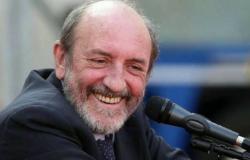During a meeting held at the IRCCS Maugeri in Pavia, an innovative gene therapy was illustrated which, with a single administration, allows the genetic defect that causes this insidious and dangerous rare cardiac pathology to be corrected, with an improvement in terms of prognosis and quality of life for patients.
Arrhythmogenic heart disease
There arrhythmogenic heart disease it’s a rare genetic disease, characterized by a reduction in the ability of the heart muscle to contract associated with frequent and intense arrhythmias. It hits one person in 5 thousand in the world and often occurs during adolescence, with a prevalence in those who practice intense sporting activity.
It’s about a subtle pathology because it is characterized by non-specific symptoms, i.e. also common to other pathologies, and this often makes early diagnosis is difficult. Given the genetic nature of the disease, it cannot be prevented or definitively resolved, but to date there are therapies that can check the symptoms provided that there is high therapeutic adherence, which is difficult to ensure in very young subjects without this affecting their quality of life. For these patients, a new treatment possibility is now opening up thanks to an innovative genetic therapy, which could enormously improve the quality of life.
New innovative treatment therapy
IRCCS Maugeri of Pavia is among them Italian excellence in the treatment of arrhythmogenic cardiomyopathy: the unit of Molecular Cardiologyled by professor Silvia Priori, Full Professor of Cardiology and Director of the School of Specialization in Cardiology at the University of Pavia e luminary in this field, And national and international reference center for the management of patients suffering from genetically based arrhythmogenic pathologies, with beyond 10 thousand subjects followedof which around a hundred with the genetic variant of arrhythmogenic heart disease.
On the occasion of an event organized in the Pavia facility on Saturday 13 April 2024 and open to patients and caregivers, Professor Priori illustrated, together with doctor Natasha Patterson medical director of BioTech Tenaya Therapeuticsthe benefits of this revolutionary gene therapy for which the clinical trials and which could greatly improve the lives of those who suffer from it.
“The cause of this disease is to be found in a mutation of the gene that produces the proteins responsible for holding together the cells that make up the myocardial tissue – explains theto Professor Priori -. The alteration of the gene determines a reduction in the quantity and structure of these proteins with consequent detachment of the myocardial cells which, when separated, leave empty spaces in which fibrous tissue forms which makes the cardiac muscle less elastic and incapable of contracting and pumping blood. .
If the disease is not treated promptly, it tends to worsen and turn into heart failure. This already critical picture is associated with the fact that the presence of fibrous tissue acts as an obstacle to the propagation of the heart’s electrical impulses, giving rise to serious arrhythmias.”
Symptoms
The pathology manifests itself with palpitations, sudden fainting, not caused by other contributing causes, soften during intense physical activity or in conjunction with strong emotions, and increased risk of sudden death. The diagnosis generally occurs on the recommendation of the sports doctor, through family screening or, at an early stage, on the basis of genetic tests. To date, patients suffering from this pathology are treated with beta-blocking drugssometimes also combined withimplantation of a transvenous defibrillator which reduces arrhythmias. But the first “therapy” to be implemented istotal abstention from any sporting activity with a high impact on the heart.
In this context the Gene therapy represents an important revolution because it doesn’t just treat the symptom but acts on the substrate that causes the disease, with great hopes of being able to slow down its progress if not even cure it, as happened when gene therapy was applied to other areas of medicine.
“Arrhythmogenic cardiomyopathy is caused by a genetic defect, therefore the DNA is altered and produces an insufficient quantity of desmosomal proteins – explains Professor Priori -. There Gene therapy uses DNA synthesized in the laboratory carried inside the heart cells by a harmless virus that is unable to replicate and which brings the therapeutic DNA into the nucleus of the heart cells, increasing the level of the deficient protein in the patient.”
Single administration
The great advantage of gene therapy, which treats the pathology by acting directly on its genetic bases through biological medicines, is that it is a single administration is sufficient while current therapies involve taking various drugs every day.
“The extraordinary biotechnological advances of recent years have made it possible to make extraordinary therapeutic solutions available to patients and for us it is essential to contribute to spreading knowledge,” concludes Professor Priori.
Tags: Pavia Arrhythmogenic heart disease hope cure gene therapy





